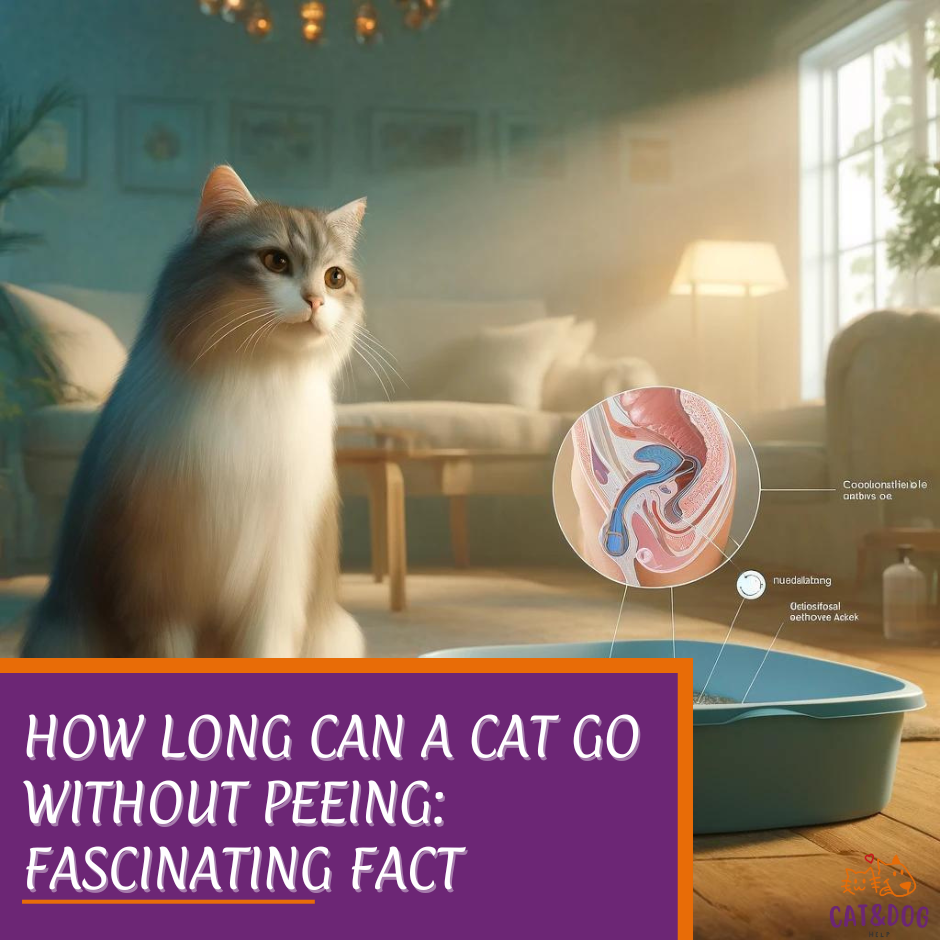Ever wondered just how long your feline friend can hold their bladder? It’s a question that might sound silly at a glance, but it’s a pretty important aspect of their health!
Just like us humans, cats’ urinary habits can say a lot about their well-being.
So whether you’re planning a long car ride with your cat or you’ve noticed some unusual behaviors around the litter box, understanding how long a cat can go without peeing could give you crucial insights into their health. (1)
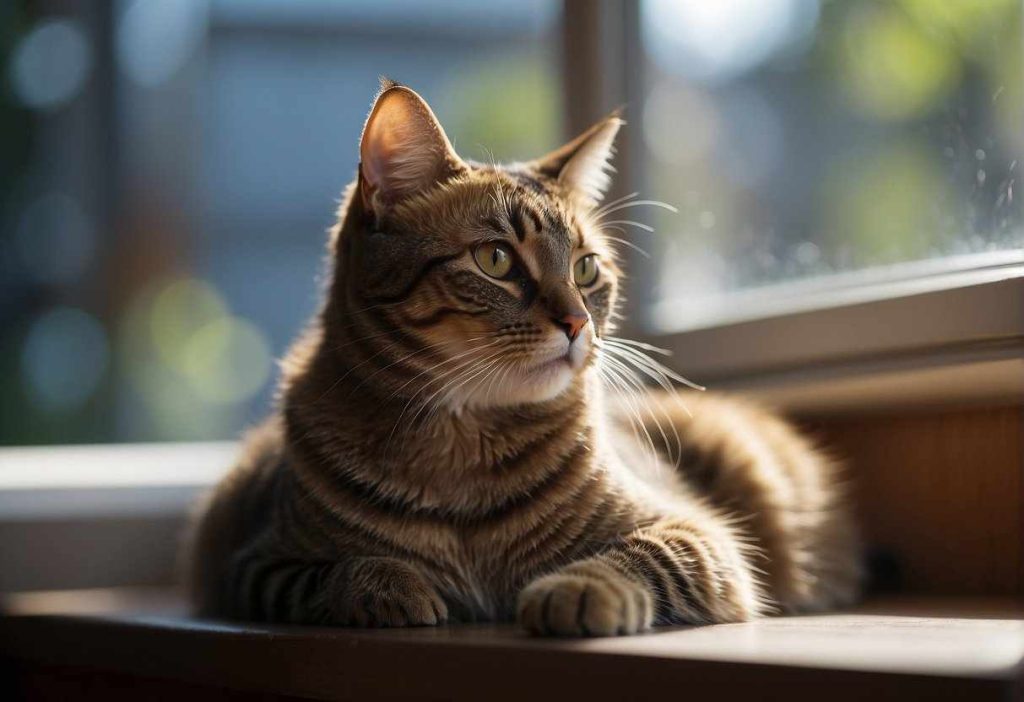
Cats typically urinate between two and four times a day. However, this frequency can change due to various factors like age, hydration level, and diet.
If your cat is not urinating as often as they should, it might be a sign of an underlying health issue that needs immediate attention. (2)
how long can a cat go without peeing so on the other hand, holding pee for too long can also lead to health complications.
It’s always better to stay informed about their normal routine so you can catch any signs of trouble early on.
Key Takeaways
- A cat’s urination frequency is an indicator of their health.
- Cats usually pee 2-4 times a day, varying with individual factors.
- Irregularities in urination can require prompt veterinary care.
How Long Can a Cat Go Without Peeing
Understanding Normal Urination Frequency in Cats
Now, let’s dig into the nitty-gritty of your cat’s bathroom breaks:
- Average frequency: Generally, cats pee 2 to 4 times a day.
- Factors influencing urination: Their water intake, diet, activity level, age, and health all play a part.
Did you know factors like the weather can affect how often your cat visits the litter box?
On hot days, they might drink more and, well, go more!
Recognizing the Signs of Urinary Distress
Okay, but when should you worry? Keep an eye out for these clues:
- Symptoms: Straining to pee, going outside the litter box, or spotting blood are all red flags.
- Frequency concerns: Less than once a day or excessive attempts can spell trouble.
Cheers to being a clued-up cat owner! Remember, staying on top of these details can mean a world of difference to your fluffy companion’s health. (3)
Keep these tips in your kitty-care arsenal, and you’ll be set!
Deciphering Urinary Health in Cats
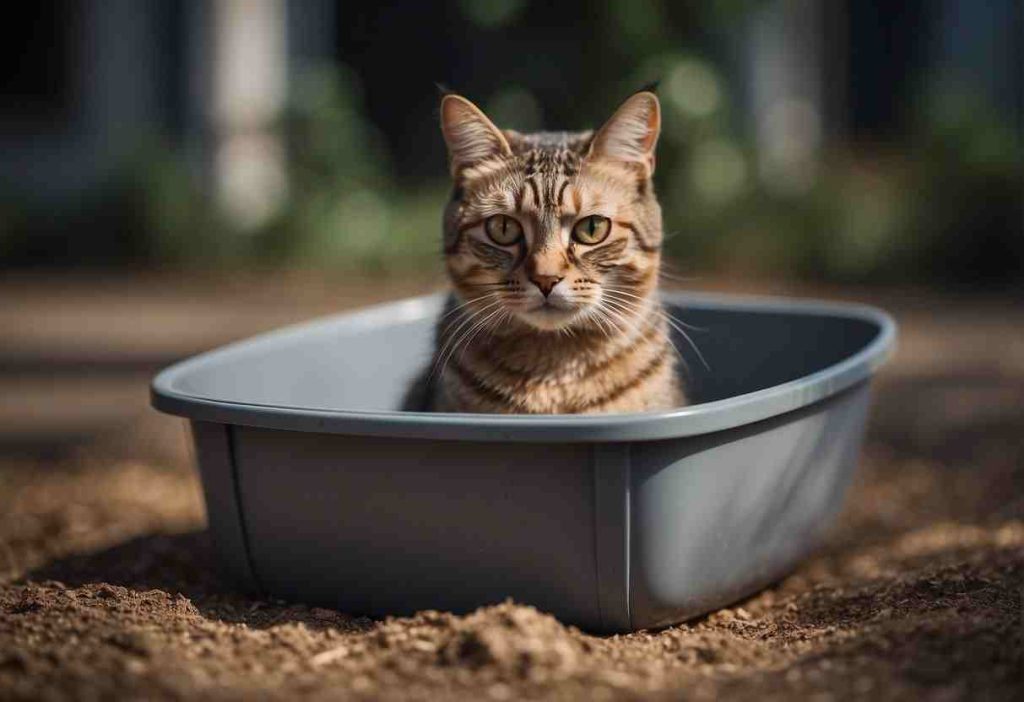
Anatomy of the Feline Urinary System
Ever wondered what’s going on inside your feline friend when it comes to their bathroom business?
Well, at the heart of your cat’s urinary health is a well-tuned system consisting mainly of kidneys, ureters, a bladder, and a urethra. These organs work together efficiently to remove waste from the body. (4)
- Kidneys: Think of them as natural filters. They cleanse the blood and regulate hydration.
- Ureters: These are like tiny highways transporting urine from the kidneys to the bladder.
- Bladder: A storage room that holds the urine until it’s ‘showtime’.
- Urethra: The final pathway where urine says goodbye to its feline host.
The Urination Cycle: Norms and Variances
How often should your kitty be hitting the litter box?
On average, a healthy cat might urinate anywhere from 2 to 4 times daily.
But hey, don’t start counting yet—many factors can cause this number to vary:
- Hydration (How much water is kitty drinking?)
- Diet (Is it more dry food or wet food?)
- Activity level (Is your cat a lazy lounger or an active adventurer?)
- Age (Older cats may go more often.)
A sudden change in your cat’s peeing patterns could be a sign to chat with your vet.
Remember, maintaining urinary health is key.
So, keep an eye on those litter box visits, ensure fresh water is always available, and if in doubt, seek professional advice!
Recognizing and Reacting to Urinary Distress
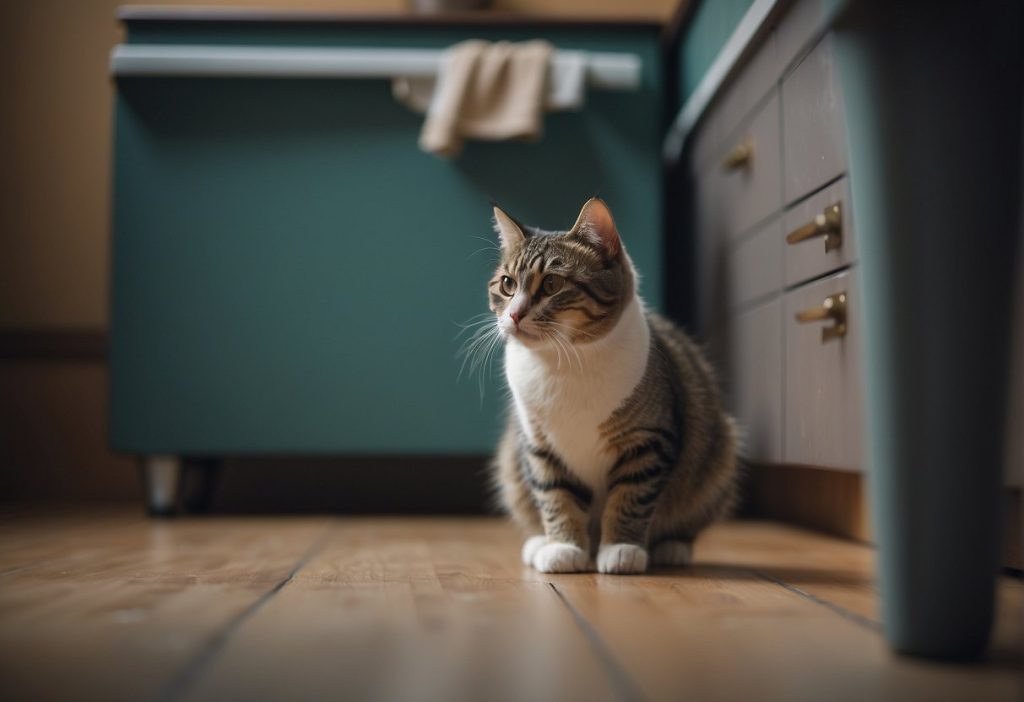
Signs of Urinary Health Issues
Have you noticed changes in your cat’s litter box habits? It’s crucial to stay alert for signs that something might be off. Keep an eye out for:
- Frequent attempts to urinate with little result
- Crying or howling while trying to pee
- Blood in the urine
- Licking the genital area excessively
- Unusual urination outside the litter box
These symptoms suggest that your furry friend may be experiencing urinary distress which could be due to a variety of conditions such as a urinary tract infection (UTI), crystals in the urine, or even a life-threatening blockage.
Emergency Response: When to Seek Immediate Help
Acting promptly can be a lifesaver. Here’s what requires a vet visit stat:
- Persistent Straining: If they’ve been in the litter box multiple times without much output, it’s a red flag.
- Pain and Vocalization: Is your cat meowing more than usual or seems in pain? Don’t wait it out.
- Lethargy: If your cat is less active or their usual playfulness is down, coupled with any urinary issues, it’s a concern.
Don’t gamble with your cat’s well-being—if you observe these alarming signs, get them to the vet immediately.
Remember, urinary problems can quickly escalate to emergencies, so keeping a close watch and acting fast ensures your cat remains happy and healthy.
Practical Guidance for Concerned Cat Owners
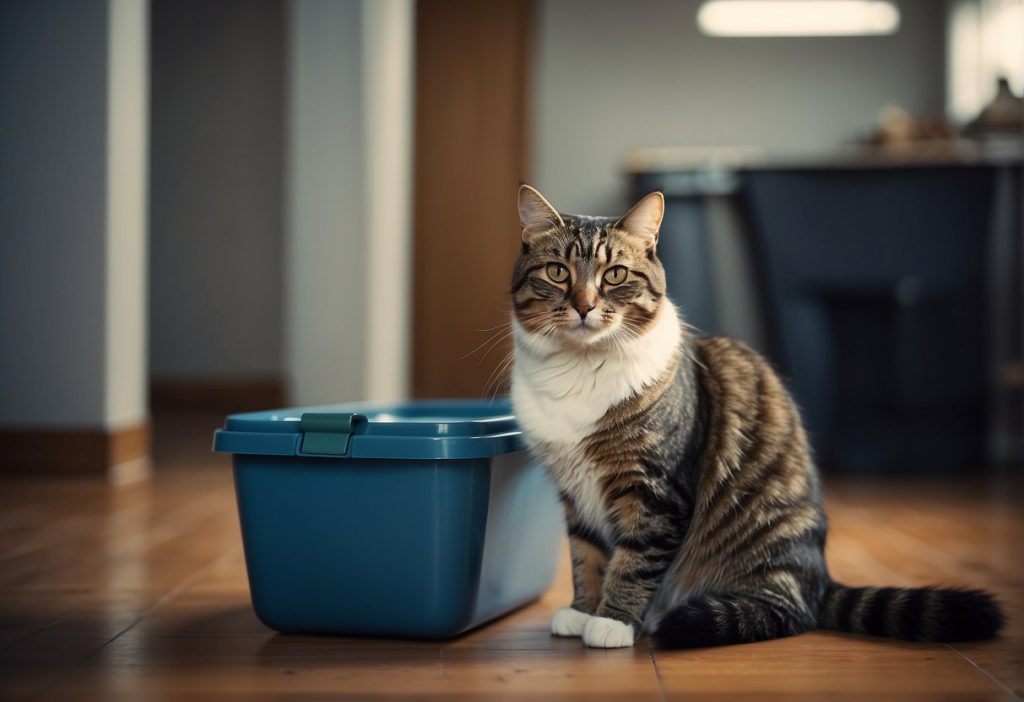
First Steps in Managing Urinary Health Concerns
Have you noticed your furry friend hasn’t used the litter box for a while? No need to panic—let’s start with some simple checks:
- Look: Check their litter box. Sometimes they’re picky and won’t go if it’s not clear to their liking.
- Feel: Gently press on their lower abdomen. Does it feel hard or tight? This could indicate a full bladder.
- Observe: Has their water intake changed? Both too much and too little can indicate issues.
If things seem off or if it’s been more than 48 hours since their last pee, consider a vet visit; it could be a sign of blockage or other health issues.
Home Care and Monitoring Techniques
Now let’s try to make your buddy more comfortable. Here are a few things you can do at home:
- Water Access: Ensure fresh water is always available. Consider a cat fountain to encourage drinking.
- Diet Check: Could their diet be causing issues? Wet food can increase water consumption.
- Environment: Stress can affect urinary habits. Create a calm space.
- Litter Box Love: Keep it clean and in a quiet area. Try a different litter if needed.
Start marking your calendar every time you notice they’ve peed. This log will be helpful for your vet and for you to stay informed on your cat’s routine.
Remember, while these steps can help, if your intuition tells you something’s up, trust that feeling.
Your vet is your best ally in keeping your cat healthy and pee-happy!
Proactive Measures for Urinary Health
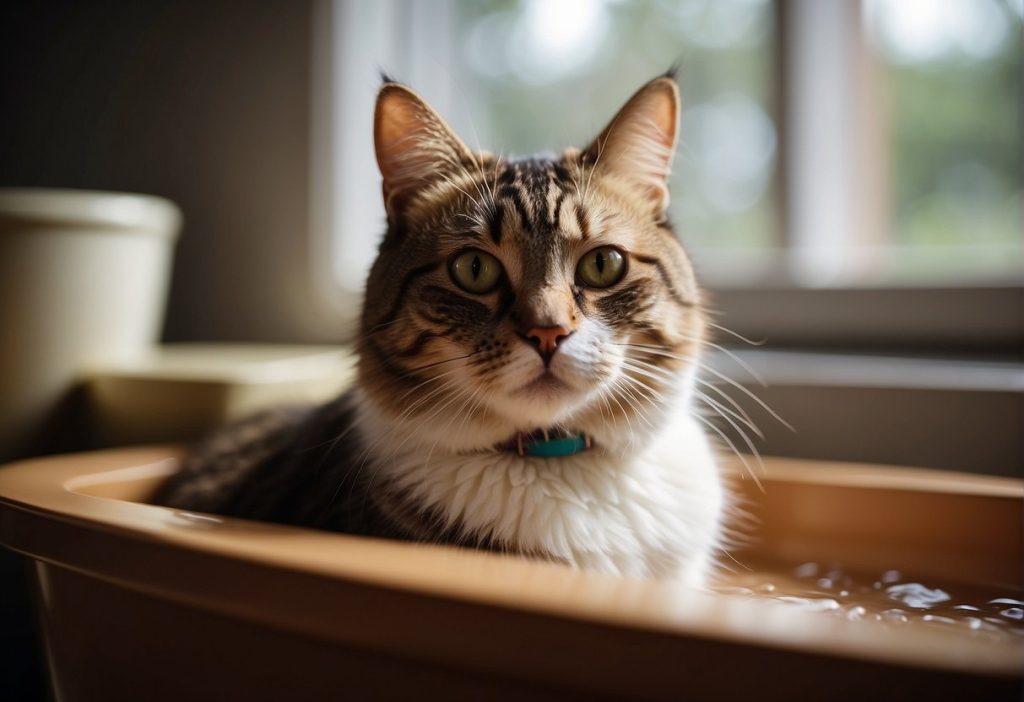
Dietary Strategies and Hydration
Did you know that the right diet and plenty of water can work wonders for your cat’s urinary health?
Cats can be finicky drinkers, so ensuring they stay hydrated is crucial. Here’s the scoop:
- Wet Food is the Way: Wet food is about 75% water, which can help your cat stay better hydrated.
- Fresh Water Access: Always have fresh water available. Consider a cat fountain to entice those who prefer running water.
- Measure Meals: Control portions to prevent obesity—a risk factor for urinary issues. (5)
Litter Box Habits and Environmental Wellness
Ever noticed how a clean bathroom makes you more likely to use it? Cats are the same! Check out these litter box tips:
- Scoop Daily: Keep the litter box pristine to encourage use and prevent “holding it in.”
- One Plus Rule: Have one litter box per cat, plus one extra. Why? Options matter to felines!
- Quiet Zone: Place litter boxes in low-traffic, quiet areas. Stress can cause urinary problems.
Remember, these simple habits can lead to big wins for your kitty’s urinary health!
Quick Recap
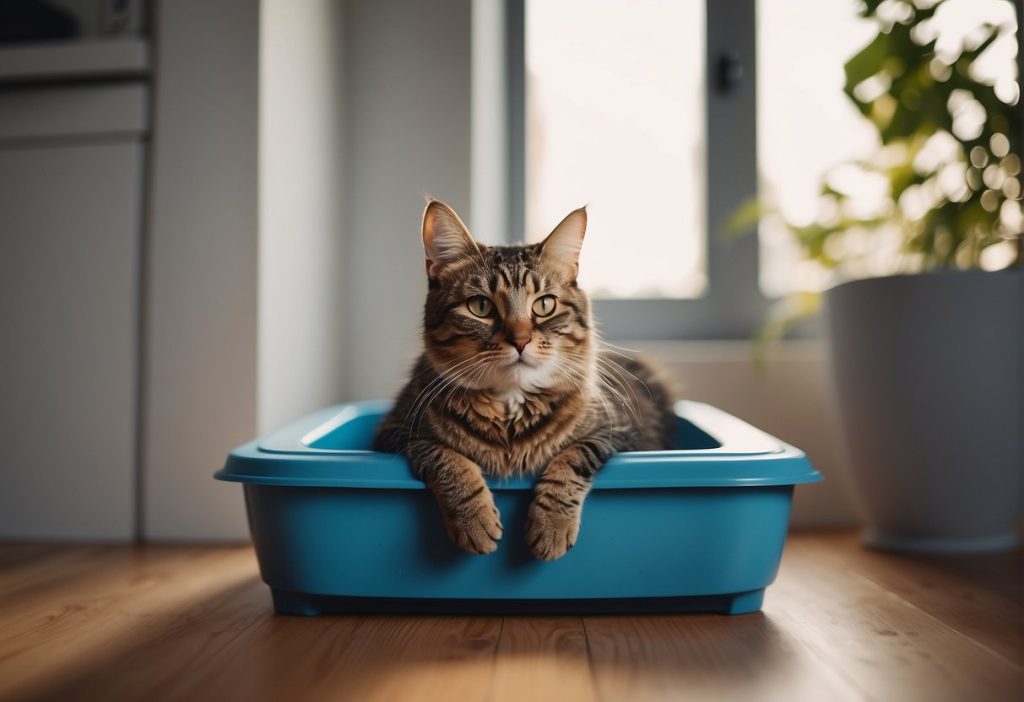
Coping with the Emotional Toll of Pet Health Issues
Ever felt a little tug at your heart when your furry friend isn’t feeling their best? You’re not alone.
The worry over a cat not peeing can be stressful, but remember, there are many like you facing this.
It’s okay to feel overwhelmed. Need a pick-me-up? Try connecting with fellow cat owners online or in local groups for support and advice.
Success Stories: Hope and Recovery
Heard about Whiskers who held off for 48 hours and still bounced back? Cats like Whsikers are champs and they remind us not to lose hope! Here are quick bites of success from owners who’ve been there:
- “Molly“: Didn’t pee for 36 hours. After prompt vet care, she’s now a happy Zoomer again!
- “Buddy“: With a urinary blockage, but after treatment, he’s meowing and ruling the roost.
- “Tiger“: Held out for nearly two days, yet with the right care, Tiger’s story ended on a purrfect note!
Hearing these stories sparks joy, doesn’t it? The resilience of our feline companions, coupled with love and care, leads to many a happy ending.
Your cat’s health and happiness are paramount.
And hey, aren’t we all here to ensure the nine lives myth holds some truth?
Keep these stories and the tips you gather in your cat-care toolkit.
Remember, supportive communities and success stories work wonders for the soul!
Frequently Asked Questions
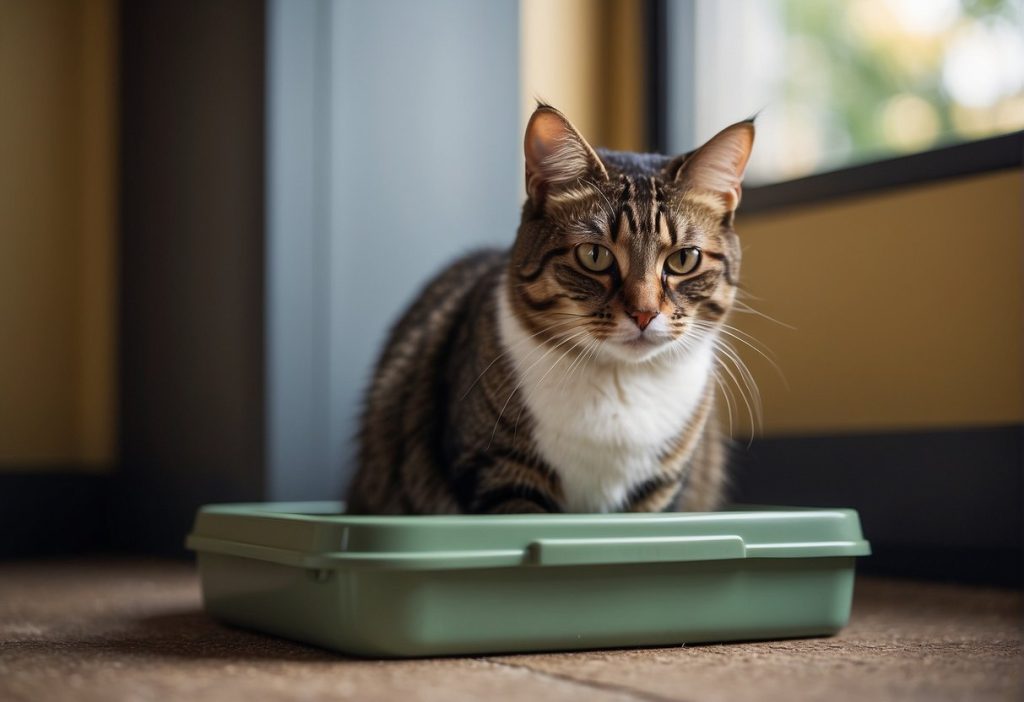
Here, we will answer some pressing questions about cat urination, hydration, and maintaining their urinary health.
What is the maximum amount of time a healthy cat can go without peeing?
Generally, a healthy cat should urinate at least once every 24 hours. If your cat is going longer than this without a trip to the litter box, it might be time to consult a vet.
How can I encourage my cat to drink more water and prevent urinary health issues?
Keep fresh water available at all times.
Consider a pet water fountain as moving water can entice your cat to drink more.
Ensure that their diet includes wet food as it has a higher water content.
What are the immediate steps I should take if I notice my cat hasn’t peed in over 24 hours?
Check the litter box for any sign of urine. Encourage hydration by offering wet food and fresh water.
Contact your veterinarian promptly as it could be a sign of a urinary blockage or other health issue
Can stress affect my cat’s urination habits?
Absolutely. Stress can lead to decreased urination or even conditions like feline idiopathic cystitis.
Keep your cat’s environment calm and offer plenty of playtime to reduce their stress levels.
What diet is best for a cat with a history of urinary problems?
Cats with a history of urinary issues may benefit from a diet formulated for urinary tract health.
These foods are designed to help maintain a proper pH balance and minimize crystal formation in their urine.
Can indoor cats have more urinary health issues than outdoor cats?
Indoor cats can be at a higher risk due to less physical activity and less environmental enrichment.
Encouraging play and providing clean, accessible litter boxes can help reduce these risks.
How often should I clean my cat’s litter box to encourage use and prevent health issues?
You should scoop the litter box daily. Clean it with soap and water every one to two weeks.
A clean litter box will be more appealing and can help prevent issues like infections or behavioral avoidance.

